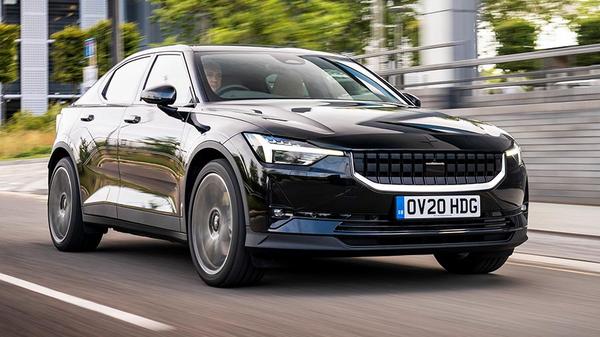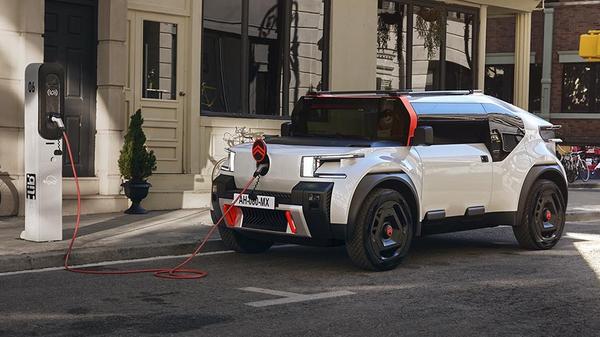News
Sustainability newsletter - January 2023
Eco awareness is driving more and more car buying decisions for a variety of reasons -here we celebrate those doing it right!


Words by: Erin Baker
Published on 9 January 2023 | 0 min read
Our regular round-up of the best sustainability initiatives by car brands continues with a look at ideas, products and services coming out of some of the major automotive players. It’s important stuff, allowing motorists to make more informed decisions about the cars we buy, from decisions about recycled interiors to questions about which car brands are doing their best to give car batteries second lives.
Watch this space every month to see who’s worthy of a place on our sustain-o-meter.
Watch this space every month to see who’s worthy of a place on our sustain-o-meter.
Citroën
First up, it’s Citroën with the Oli concept, which shows eco decisions don’t have to be hairshirts. Indeed, you can reduce your carbon footprint with some desirable and, crucially, affordable, purchases. The electric Oli (a concept at this stage but look what they did with the Ami) is made of 100 per cent recycled materials, and the vehicle parts are designed to be re-used. It has a range of 248 miles and V2G capability, which stands for “Vehicle to Grid” and means that the car can store power and sell it back to the grid when the network requires it and is willing to pay. The little Oli is built in part to solve the issue of cars being parked for 95 per cent of each day and driven by a single occupant 80 per cent of the time. Citroën’s CEO says it is “affordable, responsible and long lasting”. Hear hear to that, sir.

Polestar
Hands up as well this month for Polestar. Most brands issue software upgrades to their cars during their life cycle but Polestar issues “sustainability upgrades” to the Polestar 2. The upgrades, Polestar hopes, will help shift it to brand carbon neutrality by 2040. Good example: the 19-inch aluminium wheels will be smelted using hydropower from this month. “So what?”, we hear you ask.
Well…smelting aluminium is so energy intensive that making that small change will save 488kg of CO2e per car (CO2e means “carbon dioxide equivalent” and so includes carbon dioxide and any equivalent greenhouse gases such as methane and nitrous oxide). An additional 750kg of CO2e per car has been saved by the brand this year by changing the smelters for the aluminium battery trays to run on renewable energy. In an illustration of why we need to make more fuss about seemingly minor changes of this nature this is of more significance than the entire manufacturing plant for Polestar 2 switching to run 10 per cent on solar power. That’s a sexier headline than aluminium smelters, but it has saved just 544kg CO2e per car - a great stat but not as large a saving as the old smelters’ combined work across wheels and battery trays. A January shout-out for smelters everywhere! On a serious note, in total, Polestar’s sustainability upgrades to Polestar 2 mean that the new cars are friendlier to the environment to the tune of 1.7 tonnes of CO2e each.
Well…smelting aluminium is so energy intensive that making that small change will save 488kg of CO2e per car (CO2e means “carbon dioxide equivalent” and so includes carbon dioxide and any equivalent greenhouse gases such as methane and nitrous oxide). An additional 750kg of CO2e per car has been saved by the brand this year by changing the smelters for the aluminium battery trays to run on renewable energy. In an illustration of why we need to make more fuss about seemingly minor changes of this nature this is of more significance than the entire manufacturing plant for Polestar 2 switching to run 10 per cent on solar power. That’s a sexier headline than aluminium smelters, but it has saved just 544kg CO2e per car - a great stat but not as large a saving as the old smelters’ combined work across wheels and battery trays. A January shout-out for smelters everywhere! On a serious note, in total, Polestar’s sustainability upgrades to Polestar 2 mean that the new cars are friendlier to the environment to the tune of 1.7 tonnes of CO2e each.

Dacia
Our final monthly “hurrah” goes to Dacia, which wins plaudits at the Auto Trader New Car Awards year after year for its great-value products like the Duster, Sandero and Jogger. Dacia has gone where Bentley fears to tread, by abandoning chrome. Granted, fewer Dacia customers demand or expect chrome flourishes on their cars compared with Bentley owners, but we’ll take any opportunity to remind Bentley that where bold marketing leads, consumers follow. And what could be a braver move than getting rid of chrome before your consumers abandon it? Dacia uses an alternative in its paintwork to chrome-plating which is actually more scratch-resistant and more durable. It has also done its vehicle badges in white rather than chrome, which looks better anyway, we reckon.
